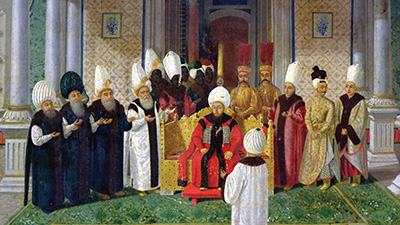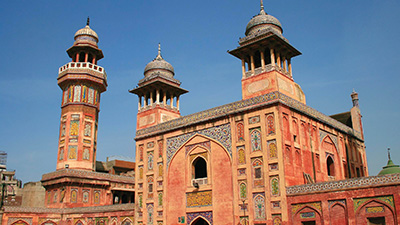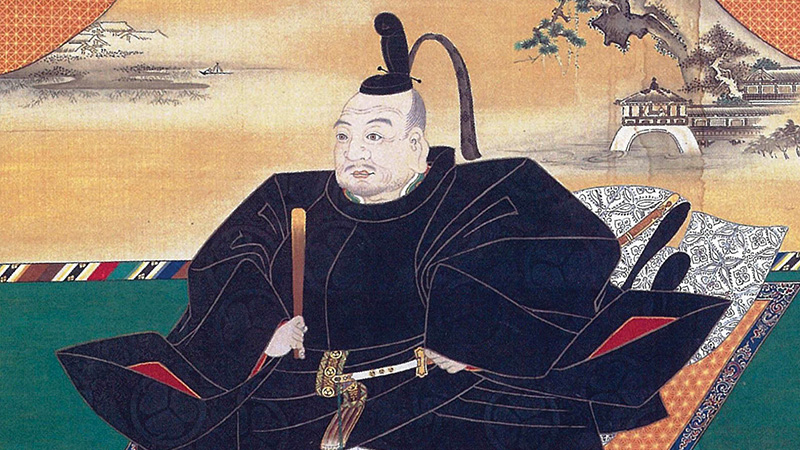Eurasian Land-Based Empires in 1750
Teacher Resources
Driving Question: How did land-based empires maintain control over such vast regions?
Viewing the world through the lenses of China and Europe helped us see how global trade and politics connected two very distant regions. Yet we also saw that the world of 1750 looked different depending on where you viewed it from. In this lesson, we’ll broaden our understanding of the “rest” of Eurasia in 1750 with an exploration of the Ottoman Empire, Mughal Empire, and Tokugawa Shogunate.
Learning Objectives:
- Compare the community structures and interactions of the Ottoman Empire, Mughal Empire, and Tokugawa Shogunate.
- Use close-reading and comparison skills to identify the strengths and weaknesses of eighteenth-century Eurasian empires.
Vocab Terms:
- bureaucracy
- centralized
- ethnic
- isolationist
- social class
Opener: Eurasian Land-Based Empires in 1750
To teach this lesson step, refer to page 3 of the Lesson 1.6 Teaching Guide.
In this lesson you’ll explore empires spanning Eurasia—the Ottoman Empire, Mughal Empire, and Tokugawa Shogunate. Make predictions about these empires through analysis of the words of an eighteenth-century teenager.
The Past Is a Foreign Country
To teach this lesson step, refer to page 3 of the Lesson 1.6 Teaching Guide.
This lesson is packed with comparison opportunities—refresh your approach with our handy Comparison One-Pager.
Was life in the eighteenth century that different from life today? In some ways, yes—in others, no. Let’s find out just how similar or different they are.
Empires on the Rise
To teach this lesson step, refer to page 7of the Lesson 1.6 Teaching Guide.
As you learn about the Ottoman Empire, Mughal Empire, and Tokugawa Shogunate, look for the characteristics that enabled them to build and maintain control—and also keep an eye out for their weaknesses. Then compare their strengths and weaknesses to help you build the best empire.
-
Guiding Questions
-
Before you read
Preview the questions below, and then skim the article. Be sure to look at the section headings and any images.
While you read
Look for answers to these questions:
- Looking at the map, what do you notice about the location of the Ottoman Empire?
- In addition to their political and military roles, what religious role did the Ottoman sultans claim, and who were their officials and representatives?
- How did the Ottoman Empire rule so many provinces as well as different religions and ethnic communities?
- What kinds of relationships did the Ottoman state and people have with others outside the empire?
- What big global changes challenged the Ottoman Empire in 1750?
After you read
Respond to this question: What characteristics of the Ottoman Empire in 1750 seem unique, and what characteristics seem to be part of a wider global pattern?
-
Guiding Questions
-
Before you read
Preview the questions below, and then skim the article. Be sure to look at the section headings and any images.
While you read
Look for answers to these questions:
- Looking at the map, what do you notice about the changing shape and size of the Mughal Empire in the years leading up to 1750?
- What groups or classes of people were the most important supporters of Mughal rule?
- How did the Mughal Empire successfully rule so many different communities until the mid-eighteenth century?
- What was the role of the Mughal Empire in the global economy?
- What internal challenges did the Mughal emperors face in 1750?
- What external challenges did the Mughal emperors face in 1750?
After you read
Respond to this question: What characteristics of the Mughal Empire in 1750 seem unique or distinctive, and what characteristics seem to be part of a wider global pattern?
-
Guiding Questions
-
Before you read
Preview the questions below, and then skim the article. Be sure to look at the section headings and any images.
While you read
Look for answers to these questions:
- Looking at the map, what do you notice about internal trade in Japan, and what does it tell you about the geography of the country?
- What groups or classes of people were the most important supporters of Tokugawa rule?
- How did the shoguns maintain control of all the different social classes in Japan?
- What were Tokugawa attitudes toward global trade and foreign ideas?
- How successful were the Tokugawa shoguns, and how should we measure that success?
After you read
Respond to this question: What characteristics of Japan in 1750 seem unique or distinctive, and what characteristics seem to be part of a wider global pattern?
Closer: Eurasian Land-Based Empires in 1750
To teach this lesson step, refer to page 13 of the Lesson 1.6 Teaching Guide.
Our Writing Guide provides practical tips for integrating both short and extended writing activities into your classroom routine.
“Great empires are not maintained by timidity.” How well does this quote describe the empires you learned about in this lesson?
A Different-Looking Empire
To teach this lesson step, refer to page 13 of the Lesson 1.6 Teaching Guide.
The Omani Empire didn’t look like the large, land-based empires of Asia, but it also didn’t look like the maritime empires of Europe. Was it an empire at all?
-
Guiding Questions
-
Before you watch
Preview the questions below, and then review the transcript.
While you watch
Look for answers to these questions:
- What makes the Omani Empire different from other Islamic empires?
- What areas did the Omani Empire cover at its peak?
- How did the Omani Empire come to be an empire?
- What are two key differences between the Omani Empire and most other empires?
- How did the Omani Empire change East Africa in the long term?
After you watch
Respond to this question: Do you think the Omani Empire was actually an empire? Why or why not?






